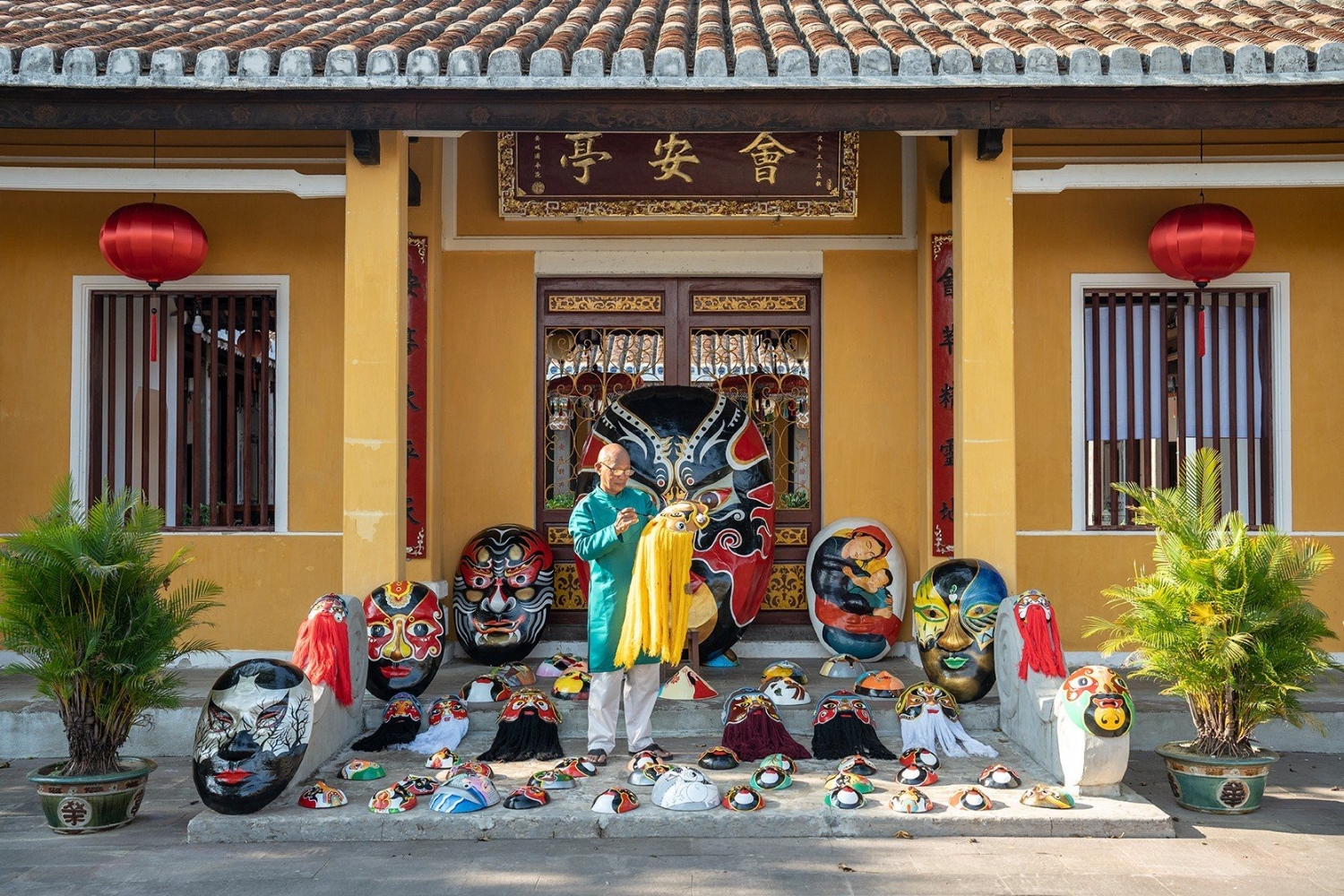Hoi An is a natural wonderland with rivers, lakes, beaches, islands, fields, and mangrove forests. Its geographical location is considered a “convergence of water” because of the confluence of rivers before they flow into the sea. This played a role in the city’s history as a bustling international trading port in the sixteenth and seventeenth centuries. Trade and cultural acculturation with many different countries led to the establishment of residential communities that have preserved tangible and intangible heritages of history, architecture, culture, religious activities, and crafts. This has contributed to the distinct “Hoi An personality” of the people here.
Throughout the city’s development, the people of Hoi An have consistently displayed creativity in labor and production based on natural and social conditions. This has contributed to the formation of more than


50 crafts and craft villages, including crafts such as painting and bamboo craft, lantern-making, and garment-making, and villages like Kim Bong Carpentry Village, Thanh Ha Pottery Village, Tra Que Vegetable Village, and Cam Thanh Village. Meticulously crafted by the hands of talented and creative artisans and craftsmen, Hoi An’s craft products have been transported by merchant ships to locations all over the world, serving the community’s livelihoods and bring the city fame.
After many hours of hard work, the residents of Hoi An performed repartee


chants, Bai Choi songs, and folk songs to entertain, exchange, foster affection, and enrich their cultural and spiritual lives. The Bai Choi art in Hoi An has significantly contributed to UNESCO’s recognition of the city as an Intangible Cultural Heritage of Humanity.
Crafts and folk art are the core of Hoi An’s events and festivals with many large and small programs and activities throughout the year, such as the Hoi An Lantern Festival, the Hoi An Traditional Occupations’ Beauty, the Beach Festival, the International Choir Competition, the International Cuisine Festival, and the International Silk and Brocade Festival. International cultural exchange festivals also feature craft demonstrations, craft product displays, and traditional art performances. They include the Hoi An-Japan Cultural Exchange in Hoi An and international cultural exchanges such as the Hoi An Lantern Festival in Germany (Wenigerode), France (Paris), Korea, Italy, Hungary, Japan. These events attract both locals and tourists. The residents of Hoi An also transform crafts and folk art into cultural products to enhance tourism activities and provide visitors with a variety of new experiences.
The city currently has 658 small businesses and 1,710 household businesses, with over 4,000 employees engaged in crafts and folk art. This fact attracts many creators, artists, artisans, and experts in many creative fields to work, settle, and contribute to the formation of talented and enthusiastic creative communities as well as unique and appealing creative spaces in Hoi An.


Becoming a member of the UNESCO Creative Cities Network is crucial for Hoi An to enhance its status and create a new image. It is more than just a title; it is a goal that requires efforts to implement initiatives, fulfill commitments, and provide values and benefits to the community. In addition to continuing activities to preserve and develop crafts and folk art, Hoi An will create conditions to promote creativity in other fields. The city aspires to connect and interact with members both inside and outside the Network, while also strengthening future activities to expand the Network.
Hoi An Creative Team





